Tricycles have larger frames and more components than regular bicycles, and so many people think they must be cumbersome to clean. However, that is not necessarily the case.
Cleaning a tricycle takes longer than cleaning a bicycle, and there are more components to pay attention to, but it is not harder. Once you put together every item you need, you know which items to start from, and you know which components to focus on.
This blog will show you a step-by-step process on how to clean your adult tricycle in 4 steps, covering all the items you need, how to prepare the trike for cleaning, and how to clean the trike step by step.

How to Clean an Adult Tricycle: Important Steps
The process of cleaning a tricycle can be simplified into three different parts: gathering your cleaning materials and tools, preparing the tricycle for cleaning, doing a pre-cleaning checklist, scrubbing the frame and lubricating parts, and after cleaning care.
Step#1. Put Together All The Supplies You Need For Tricycle Cleaning.
Cleaning different parts of a tricycle requires different items and supplies. The items you need to clean a tricycle broadly fall into three categories: tools for cleaning and degreasing, lubrication and finishing, and tools and safety.
| Cleaning and Degreasing | Tools and safety | Lubricating and Finishing |
|
Bucket(s) of warm water |
Hex/allen keys and an adjustable wrench |
Bicycle chain lube (wet or dry) |
| Mild dish soap or a bike-specific bike wash | Bike stand or a stable way to elevate the trike | Light oil for pivots and cable ends (optional) |
|
Bike-safe degreaser (water-soluble or citrus-based) |
Rubber gloves and eye protection (if using degreasers) |
Corrosion inhibitor or anti-rust spray (optional) |
| Chain-cleaner tool (optional) or a stiff-bristled brush/old toothbrush |
Paper towels/shop towels and a container for dirty wastewater |
|
| Soft sponge and microfiber cloths or rags | Tire pump with pressure gauge | |
| Soft nylon brush or car-wash brush for the frame and basket | Fine sandpaper (for lightly sanding glazed brake pads) | |
| Narrow detailing brushes and toothpicks for tight spots | ||
| Soft-bristle tire brush for tread/dirt removal |
Treating cleaning your tricycle like a kitchen recipe will help you work faster, be more efficient, and be less likely to damage anything.
Step# 2. Prepare the Tricycle for Cleaning
Preparing your tricycle for cleaning means taking steps to ensure that cleaning is efficient and any potential harm or damage during cleaning is minimized or prevented. Do these quick steps before you touch soap or degreaser.
i. Choose an Ideal Location and Time for Cleaning
- The best place to clean your tricycle is outside on a driveway or in a well-ventilated garage. Avoid cleaning over grass or storm drains because degreasers and oil can harm soil and waterways. If you must work inside, lay down a tarp or cardboard.
- A mild, dry day is ideal for cleaning a tricycle. Avoid direct hot sun ( it causes the soap to dry too fast and leaves residue) and don’t clean immediately after a long ride. Let the hot parts cool first.
ii. Position the Tricycle for Cleaning
- If you have one, use a bike stand to support the tricycle as you clean. If not, set the trike on level ground and block the wheels so it won’t roll.
- Elevate the rear slightly so that the wheels can rotate freely if you intend to clean the drivetrain as well. Avoid flipping the trike onto its handlebars unless the grips and frame can take it.
Step# 3. Do a Pre-clean checklist
- Remove cargo from baskets and racks.
- Remove or cover accessories that aren’t waterproof (lights, phone mounts, bags).
- Turn off the power and remove the battery on electric models (if removable). Seal charging ports with tape or protective covers.
- Put all tools and supplies within arm’s reach and place a container under the drivetrain to catch degreaser runoff.
i. Do a Quick Safety Inspection
- Put on gloves and eye protection if you’re using stronger degreasers.
- Do a quick walk-around: note any loose bolts, cuts in tires, frayed cables, or glaring damage. This tells you what may need attention beyond cleaning.
Step #4. Step-by-Step Cleaning Process For Tricycles (Order matters)
To thoroughly and effectively clean an adult tricycle, start with the least dirty to most dirty components, and adopt a top-to-bottom approach so you don't end up re-contaminating cleaned areas. Follow this order
i. Do a Quick inspection (2-3 minutes)
Scan the trike for obvious issues you may need to keep in mind or address while cleaning. This may include: worn brake pads, low tire pressure, loose rack bolts, rusty spots, or frayed cables. Jot these down to address after cleaning.
ii. Rinse off loose dirt (5-10 minutes)
Use a gentle hose spray or your bucket of water to rinse away grit and mud from the frame of the bike. Remember to start at the top and work downward, so gravity can do the work for you.
Also, don’t use a pressure washer near hubs, bottom bracket, headset, or motor seals; high pressure can force water into bearings and electrical components. Use a bucket when you get to these areas.
iii. Clean tires and wheels (10-15 minutes)
To clean your tricycle tires, scrub them with soapy water and the tire brush, identifying and removing stones lodged in the tread as you go.
Wipe the rims and spokes with a sponge and mild soap. If your tricycle has alloy rims, use non-abrasive cloths to avoid scuffs.
If the wheels are very dirty, removing them may make cleaning easier.
iv. Wash the frame, basket, and accessories (10-20 minutes)
Cleaning the frame first prevents loose grit from contaminating the drivetrain and moving parts later.
Mix warm water and mild soap. Wash the frame from top to bottom, allowing the dirt to flow downward, so it doesn't re-soil the cleaned areas.
Use the soft brush for the basket and the toothbrush for crevices (around the seat clamp, brake bosses, rack mounts).
Rinse thoroughly when you are satisfied, and don’t let soap dry on the paint.
v. Degrease the drivetrain (15-30 minutes)
Once the frame is clean, the next step is to tackle the drivetrain. The drivetrain is usually the dirtiest part of a tricycle, so it needs to be cleaned thoroughly and with care. To clean a drivetrain on a tricycle, you have two options:
- Use an on-bike chain cleaner filled with degreaser and backpedal per instructions.
- Apply degreaser to the chain, chainrings, cassette/freewheel, derailleur pulleys, and scrub with a stiff brush and toothbrush.
Whichever method you choose, follow these steps:
- Apply degreaser and let it sit for a minute (follow product directions).
- Scrub until grime loosens. For stubborn gunk, consider removing the chain for a soak.
- Rinse with low-pressure water or wipe clean with rags (water-soluble degreasers rinse easier).
-
Dry the chain and drivetrain thoroughly with clean rags.
Remember to catch and properly dispose of used degreaser. Whatever you do, don’t pour it into storm drains.
vi. Clean the brakes and braking surfaces (5-10 minutes)
How you clean the brakes of a tricycle depends on the nature of the brakes. Most adult tricycles nowadays have disc brakes, but some still have rim brakes.
- For Rim brakes: Clean rims with isopropyl alcohol or rim cleaner to remove oil and residue. Inspect pads; sand lightly if glazed.
- For Disc brakes: Use isopropyl alcohol on rotors. Avoid touching rotors and pads with bare, oily hands. If pads are contaminated with oil, replacement is usually safer than attempting to clean.
vii. Clean hubs, headset, and bottom bracket externals (5-10 minutes)
Wipe grime from hub seals and bearing covers. Don’t force water into bearing areas. If the bearings feel rough when spun after cleaning, they may need professional service. So, let them be for the moment.
viii. Clean the saddle, grips, and accessories (5-10 minutes)
Wipe down the saddle, seatpost, grips, basket liners, and racks. For leather saddles, use a saddle-specific cleaner/conditioner. Clean any cargo or panniers separately.
ix. Dry and buff the Tricycle (5-10 minutes)
Use microfiber towels to dry the entire trike. While you dry, open crevices and dry under racks and around bolts. Thoroughly drying your trike will not only help it resist rust but also allow lubrication to penetrate properly.
x. Lubricate moving parts (10-15 minutes)
There are three essential components you should always lubricate when you clean a tricycle: the chain, pivots/pedals, and cables.
- Chain: Apply lube one drop per chain link while slowly backpedaling. Let it penetrate for a few minutes, then wipe off excess: too much lube attracts dirt.
- Pivots and pedals: Add tiny drops to derailleur pivots, brake pivots, kickstand, and pedal threads if needed.
- Cables: A light drop at cable ends can help if cables are exposed.
To lubricate your tricycle, you can choose wet or dry lube appropriate to your conditions (wet for rainy, dry for dusty).
Step #5. Final inspection and test (5-10 minutes)
- Inflate tires to the recommended PSI printed on the sidewall.
- Test brakes and shifting; make minor cable tension or pad adjustments.
- Tighten bolts to snugness; use a torque wrench for critical fasteners when you have manufacturer specs.
- Reattach accessories and, for electric models, re-insert the battery only after everything is dry.
Tricycle Cleaning Tips to Keep in Mind
Optional deep-clean tasks (periodic)
- Remove the chain and soak it in degreaser for a thorough clean. Rinse, dry, and relube.
- Remove wheels and service hubs (clean and regrease bearings) if you hear grinding.
- Touch up paint chips to prevent rust.
- Replace brake pads if they’re thinner than manufacturer recommendations or contaminated.
How often to clean
- Light wipe and lube: After every 1–3 rides in dusty or wet conditions; weekly for regular riders.
- Full clean (frame + drivetrain): Monthly for frequent riders, or after particularly muddy/wet rides.
- Deep service (bearings, hub overhaul): Annually or every 1–2 years, depending on usage and exposure.
Quick troubleshooting
- Chain still noisy: Check for stiff links, worn chain/cassette, or incorrectly applied lube. Replace the chain if it’s stretched.
- Brakes spongy: Hydraulic brakes may need bleeding; cable brakes may need tightening or replacement of cables.
- Wobbling wheel: Check for a bent rim, loose spokes, or low tire pressure.
- The electric won’t power on after cleaning: Ensure the battery is dry, correctly seated, and the terminals are clean. If the problem persists, check connectors and fuses; contact a bike technician for electrical diagnostics.
Cleaning a Regular Tricycle vs Cleaning an Electric Tricycle
The main difference between cleaning a regular adult tricycle and an electric tricycle is that electric tricycles need gentler, more cautious handling: they have electric components (batteries, motors, controllers) that must not come in contact with water.
Here are some of the main differences you may want to keep in mind:
| Area | Regular Adult Tricycle | Electric Adult Tricycle |
| Electronics | No electrical parts to worry about. | Must protect the battery, motor, controller, and display from excessive water. |
| Water exposure | Can be rinsed more freely (but still avoid high-pressure jets). | Use only lightly damp cloths near electrical parts; avoid spraying water directly in those areas. |
| Battery handling | Not applicable. | Remove the battery before washing (if removable) or turn off and seal ports. Ensure contacts stay dry. |
| Motor cleaning | None. | Gently wipe motor casing; do not apply degreaser or water near motor seals. |
| Charging ports | None. | Cover or seal the charging port to prevent moisture from entering. |
| Inspection | Focus on drivetrain, frame, and brakes. | Also, inspect wiring harness, cables, and connectors for moisture or corrosion. |
| Drying and post-cleaning | Regular wipe-down is enough. | Must ensure all electrical components are completely dry before reinserting the battery or turning on power. |
Everything else-frame washing, tire scrubbing, drivetrain degreasing, and lubrication—remains similar, but for e-trikes, the golden rule is: protect electronics and keep water away from seals.
 Final Thoughts on Cleaning a Tricycle
Final Thoughts on Cleaning a Tricycle
Cleaning your adult tricycle is a straightforward routine that keeps it safe, efficient, and longer-lasting. With the right supplies, a sensible order of operations, and a little attention to electrical components on e-trikes, your trike will stay road-ready and reliable.
Here is a complete guide on how to charge your adult tricycle.

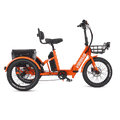
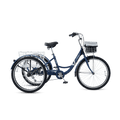
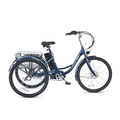
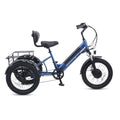
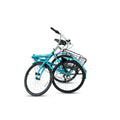
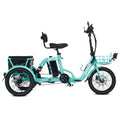

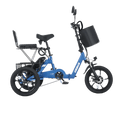
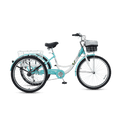
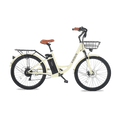
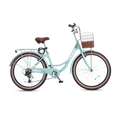
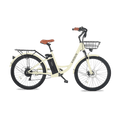
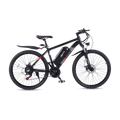
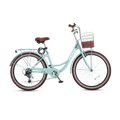

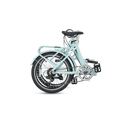
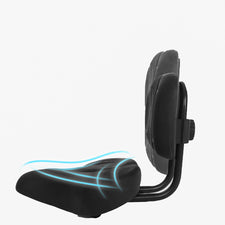








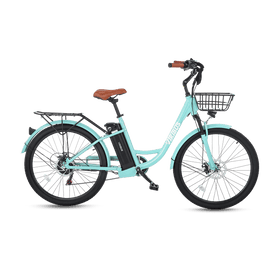
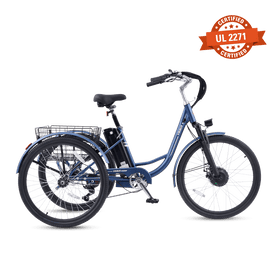
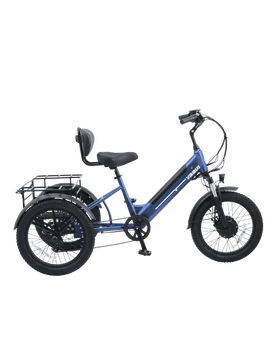



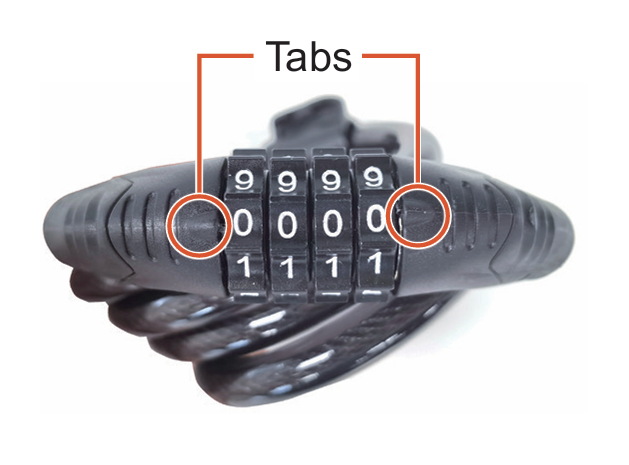
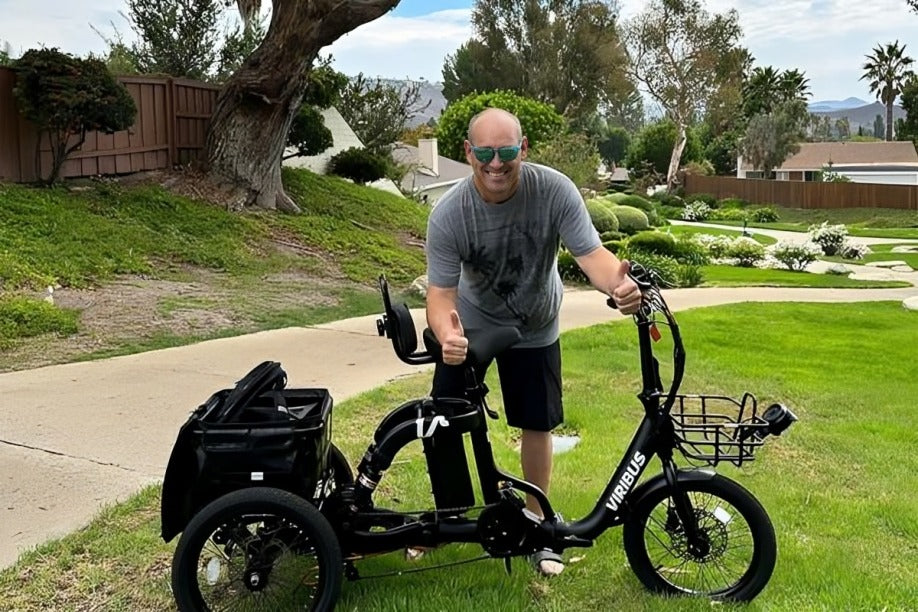
Leave a comment
All comments are moderated before being published.
This site is protected by hCaptcha and the hCaptcha Privacy Policy and Terms of Service apply.